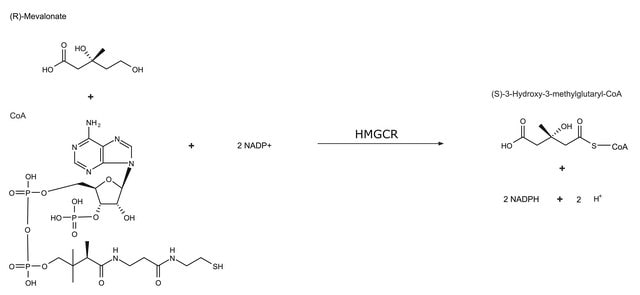I3500
Indoxyl acetate
≥95% (GC)
Synonym(s):
3-Indolyl acetate, 3-Acetoxyindole
Sign Into View Organizational & Contract Pricing
All Photos(1)
About This Item
Empirical Formula (Hill Notation):
C10H9NO2
CAS Number:
Molecular Weight:
175.18
Beilstein:
143086
EC Number:
MDL number:
UNSPSC Code:
41106305
PubChem Substance ID:
NACRES:
NA.51
Recommended Products
Quality Level
Assay
≥95% (GC)
form
powder
mp
128-130 °C (lit.)
storage temp.
2-8°C
SMILES string
CC(=O)Oc1c[nH]c2ccccc12
InChI
1S/C10H9NO2/c1-7(12)13-10-6-11-9-5-3-2-4-8(9)10/h2-6,11H,1H3
InChI key
JBOPQACSHPPKEP-UHFFFAOYSA-N
Looking for similar products? Visit Product Comparison Guide
Application
Indoxyl acetate:
- has been used to prepare free indoxyl for fermentor feeds and for in vitro 3-deoxy-D-arabino-heptulosonate 7-phosphate (DAHP) synthase inactivation assays
- may be used as the potential substrate for the evaluation of carbonic anhydrases (CAs) esterase activity
- may be used to prepare indoxyl acetate differential disk to evaluate the indoxyl acetate hydrolysis test for the differentiation of Campylobacter species
Biochem/physiol Actions
Indoxyl acetate (IA) can be used as a substrate to detect acetylcholinesterase (AChE) activity. It may also have the potential to be used as a suitable substrate for fast and easy detection of lipase activity.
Signal Word
Warning
Hazard Statements
Precautionary Statements
Hazard Classifications
Acute Tox. 4 Oral - Eye Irrit. 2 - Skin Irrit. 2 - STOT SE 3
Target Organs
Respiratory system
Storage Class Code
11 - Combustible Solids
WGK
WGK 3
Flash Point(F)
Not applicable
Flash Point(C)
Not applicable
Personal Protective Equipment
dust mask type N95 (US), Eyeshields, Gloves
Choose from one of the most recent versions:
Already Own This Product?
Find documentation for the products that you have recently purchased in the Document Library.
J G Fox et al.
Journal of clinical microbiology, 38(7), 2546-2549 (2000-07-06)
We recently analyzed 11 helicobacter isolates cultured from diarrhea patients in Canada. These isolates had been characterized biochemically by restriction fragment length polymorphism (RFLP; AluI, HhaI) analysis and by fatty-acid analysis as Helicobacter pullorum. However, four of the isolates differed
Mantas Baliukynas et al.
Enzyme and microbial technology, 139, 109584-109584 (2020-08-01)
The interest in CO2 capture and conversion by biological methodologies into various beneficial products is increased. In nature, there are enzymes, with hydration activity, which catalyze the reversible hydration of the CO2 molecule and, thus, are of high interest for
Tomas Valek et al.
International journal of analytical chemistry, 2019, 8538340-8538340 (2019-12-31)
Lipases play a crucial role in metabolism of microbes, fungi, plants, and animals, and in analytical chemistry, they are often used in detection of fats and triglycerides. Determination of lipase activity is also important in toxicology, when lipase activity can
J C Reitmeyer et al.
Journal of medical microbiology, 35(3), 148-151 (1991-09-01)
The biochemical characteristics of group G streptococci isolated from cats were markedly similar to the characteristics of group G streptococci from man. Both cat and human isolates of group G streptococci were also very similar in biochemical characteristics to group
Simon J G Otto et al.
Foodborne pathogens and disease, 17(3), 178-186 (2019-10-30)
To describe a historical baseline of antimicrobial resistance (AMR) profiles for human clinical Campylobacter species isolates obtained by laboratory surveillance in the province of Saskatchewan from 1999 to 2006; to determine if there were differences in resistance between Campylobacter jejuni
Our team of scientists has experience in all areas of research including Life Science, Material Science, Chemical Synthesis, Chromatography, Analytical and many others.
Contact Technical Service









